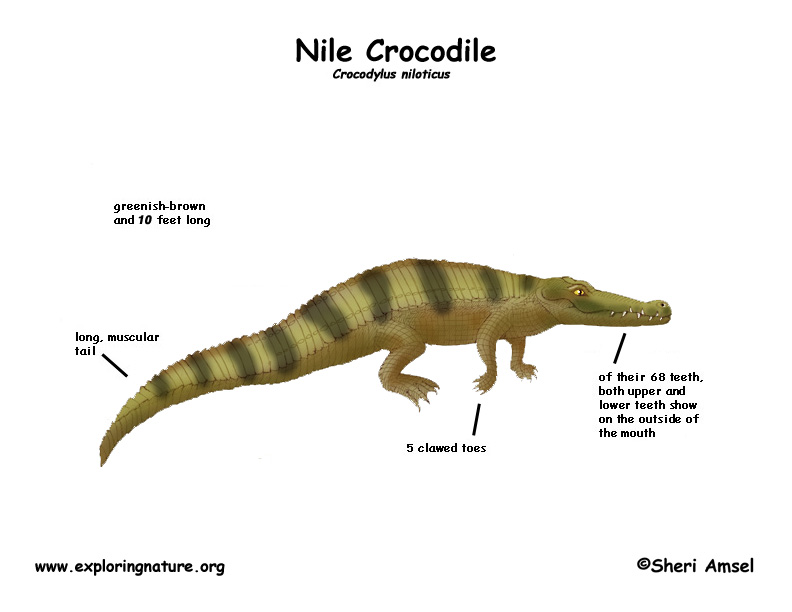

They are found in Africa and on the island of Madagascar.
They live in freshwater areas like; lakes, rivers, swamps, and mixed salt and fresh water (brackish) areas.
They can reach about 10 feet long (1.2 m).
They dig into dens in very cold or hot weather until temperatures get better. They allow some birds to “pick their teeth.” They open their mouths wide and let the bird pick pieces of meat from between their large teeth.
They eat mostly fish, amphibians and reptiles, but will take a big animal like an antelope, buffalo, baby hippos, or big cat, if they can. They also eat dead animals that they find (carrion).
Once they are adults, man is their only real predator.
The female digs a nest hole in a sandy bank above the high water line. There she lays about 60 eggs. She stays near the nest until they hatch in about 14 weeks and then carries the babies to the water. They stay near her in the water for protection.
They can live for 45 years in the wild.
Kingdom: Animalia
Phylum: Chordata
Subphylum: Vertebrata
Class: Reptilia
Order: Crocodylia
Family: Crocodylidae/Subfamily: Crocodylinae
Genus: Crocodylus
Species: C. niloticus
When you research information you must cite the reference. Citing for websites is different from citing from books, magazines and periodicals. The style of citing shown here is from the MLA Style Citations (Modern Language Association).
When citing a WEBSITE the general format is as follows.
Author Last Name, First Name(s). "Title: Subtitle of Part of Web Page, if appropriate." Title: Subtitle: Section of Page if appropriate. Sponsoring/Publishing Agency, If Given. Additional significant descriptive information. Date of Electronic Publication or other Date, such as Last Updated. Day Month Year of access < URL >.
Amsel, Sheri. "Crocodile (Nile)" Exploring Nature Educational Resource ©2005-2024. December 14, 2024
< http://www.exploringnature.org/db/view/Crocodile-Nile >

